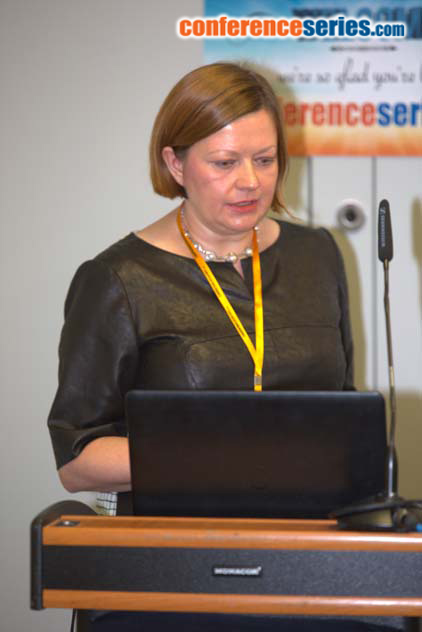
Agnieszka Iwan
Military Institute of Engineer Technology, Poland
Title: Smart strategies for incorporation Si solar cells into textiles
Biography
Biography: Agnieszka Iwan
Abstract
A photovoltaic (PV) technology on the elastic substrates is considered presently as more cost-effective than traditional crystalline silicon based PV, which is heavier and more fragile. Flexible photovoltaic technologies can be divided into: Si based solar cells and organic (polymer) solar cells. Both of the mention types of solar cells are investigated at the Military Institute of Engineer Technology (WITI) for civil and military applications. It is known that the preparation of thin film c-Si still remains a challenge. Several methods as epitaxial layer transfer, etch-release method and exfoliating from bulk silicon wafer are investigated to fabricate flexible silicon solar cells. We proposed in our work new smart strategies to incorporate commercial silicon solar cells into various textiles, without any change of the electrical and mechanical parameters of devices. We propose various constructions of devices connected with battery or supercapacitors as is schematically presented in Fig. 1. Depending on the lamination process and compatibility of textile with solar cell an efficiency of investigated flexible Si solar cells was 9.44-16.64%. Multi folding and unfolding of flexible device has no impact on its efficiency. Moreover, we investigated organic solar cells on the polyethylene terephthalate (PET/ITO), graphene (PET/G) substrate or substrate with special optical elements. Taking into consideration brittleness of ITO, more perspective is PET/G substrate, however in this case, improvement of electrical parameters of graphene is required. We study photovoltaic properties of various devices with graphene, taking into consideration different placement of graphene in solar cell. Finally, electrical properties of devices are observed by thermographic camera to define heat energy before and after mechanical destruction. Presented flexible silicon and organic devices can be widely used on a large scale, e.g., in flexible solar cells integrated with textiles, different equipment or buildings for both military and civil applications (dual use).
Recent Publications
1. Lin Q. et al. (2014) Flexible photovoltaic technologies. J. Mat. Chem. C 2:1233-1247.
2.Krebs F. C. et al. (2006) Strategies for incorporation of polymer photovoltaics into garments and textiles. Solar Energy Mat.&Solar Cells 90:1058-1067.
3. Singh M. K. (2011) Flexible photovoltaics textiles for smart applications. Solar Cells – New Aspects and Solutions 43-68.
4. Iwan A., Chuchmała A. (2012) Perspectives of Applied Graphene: Polymer Solar Cells. Progress in Polymer Science 37:1805-1828.
5. Iwan A. (2015) An overview of LC polyazomethines with aliphatic-aromatic moieties: Thermal, optical, electrical and photovoltaic properties. Renewable and Sustainable Energy Reviews 52:65-79.
6.Iwan A. et al. (2017) Electrochemical and photocurrent characterization of polymer solar cells with improved performance after GO addition to the PEDOT:PSS hole transporting layer. Solar Energy 146:230-242.
7.Iwan A. et al. (2016) Polymer devices with graphene: solar cells and ultracapacitors. Graphene Science Handbook. 14:193-209. CRC Press/Taylor & Francis, Florida.
8.Iwan A. (2015) Polymer Solar Cells: An Overview. Energy Science & Technology, Studium Press LLC, Houston, USA. 12:321-347.
9.Januszko A., Przybył W., Krajewska A., Pasternak I., Przewloka A., Strupinski W. (2015) Patent application P.413693.


